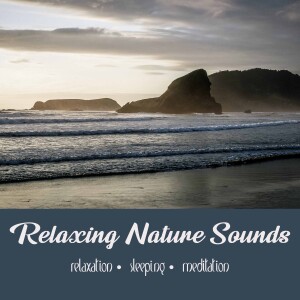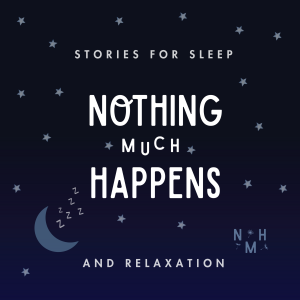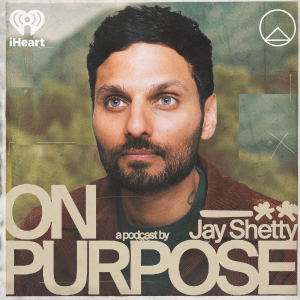

Revealing Voices
http://revealingvoices.com/index.php/feed/podcastEpisode List

Episode 75 – Healing Story 02 – From a Dead Kernel Comes an Abundant Harvest
In this episode, Tony and Eric explore the season of Lent and the reason for Easter hope. Lent is a time to let go obstacles for physical, mental, and spiritual wellbeing in order to make room for new life at Easter. This dynamic of letting go and making room is true for people of all faiths, and no formal faith connection at all. Jesus offers all a living hope for abundant life beyond death. Tony shares this story — In my faith, Easter is a season of renewal, resurrection, new life. Jesus said unless a kernel of wheat dies, there can be no harvest. If we allow things to pass away, however, we can embrace abundance beyond measure. Easier said than done. No one wants to let something or someone they care about die. We cling to addictions to feelings, thoughts, and behaviors that may once have served a purpose but now stunt our growth or even lead to our destruction. As a child, I experienced trauma in my life. This aggravated a genetic mental disorder. This could have been very disruptive. But I was encouraged by family, teachers, and coaches, to pursue athletic prowess and scholastic achievements. I became addicted to success and recognition. But I couldn’t get enough. After being humbled in college, I turned to alcohol, nicotine , and marijuana. Some call this self medicating To quote my good buddy Steve Franz, it’s really dying by suicide in a manner deemed acceptable by society. I didn’t die physically, but these death-dealing ways did great damage to me in many ways and I hurt others as well. I quit consuming substances to raise a family but I didn’t tackle to root issue of the God-sized hole in my soul. For over 30 years I was a dry drunk — self-absorbed, self-righteous, self-destructive. When my life finally became unmanageable from things I couldn’t handle I turned back to the bottle. Soon I was in the valley of the shadow of death and saw no way out. But God showed me the Way. A friend in recovery sent me a caring text. Are you tired? Hungry? Depressed? Angry? Christ reached out to me at my lowest point and, by God’s grace, I reached back and held on tight. That was August 19, 2024. I have now been sober, sane, and serene for over 9 months now and I’m still counting each day, moment by moment. This Easter I celebrate the hope of renewed clarity, restored relationships, reconciliation with God. The Resurrection of Christ was not some incredible, irrational, inaccessible, one time miracle. God promises that all who believe and receive the Spirit of Christ have the hope of abundant life now and forever. Can you believe it? Will you receive it? To God be the glory. Now and forever. Amen. Photo credit: https://pixabay.com/photos/cross-crucifix-jesus-crucifixion-1979473/

Episode 73 – Celebrating 7 Years!
On this episode, Tony returns from Sabbatical to discuss his journey from the chaotic waters of addiction, insanity, and spiritual disease to a life of daily recovery — sober, sane, and serene. Eric shares his inspiration for a new book — 575 Gardens. The book will contain haiku and life reflections written over the past decade. Tony and Eric then provide a sneak peek of the upcoming season 8 of Revealing Voices (March 1 marks our 7 year anniversary). In addition to Eric’s occasional Haikasts, Tony will record “Healing Stories” about the people, places, and things that have contributed to his abundant life in dual diagnosis recovery.

HAIKAST XX – Four Cries
I’m thankful for tears. As I grow older, I find that the poignant times that often precede emotional moments are actually a mix of joy and sorrow. I have also noticed tears arise in moments of intense gratitude – times when I am thankful for unexpected blessings that seem beyond what I deserve or could imagine. 2022 was definitely a year of more crying than normal. The most outstanding of these experiences was over Labor Day and involved 3 straight days of tears. My son, Isaac, attended a spiritual retreat called Chrysalis over Labor Day weekend. About 15 years prior, I volunteered at the same 3-night ecumenical experience. The site is still at the same Brown Country deeply forested remote location. Taking Isaac to the retreat was one of those drives that helped me recall many memories that are hard to access unless I’m back in the same space. They were very good memories of helping others experience the meaning of sacrifice, love, and reconciliation. Doing a deep dive into an intensive weekend of self reflection and self discovery with mostly strangers is not necessarily a teenager’s idea of a fun weekend. Like many teenagers, my son had a fair share of ups and downs throughout his childhood. Most notably, he endured the divorce of his mother and me – something that undoubtedly had a spiritual impact on him beyond my comprehension. Spiritual retreats tend to surface a lot of mixed emotions and is often the reason – whether conscious or unconscious – why people decide to not take the risk. Isaac was reluctant to commit to the long weekend, so I shared my personal experience of Chrysalis with him. We talked about the speakers over the weekend who would be sharing intimate spiritual experiences. We talked about the delicate discernment required to appreciate others’ spirituality while also questioning some of the divergent religious beliefs that may be held by those speakers. We talked about honoring the many ways that people are moved spiritually and to not judge others’ expressions of faith. I emphasized my spiritual belief that Christianity is, at its core, the cultivation and sharing of “agape” love – a concept that the weekend would help bring into sharp focus for him. What is agape love? I think of it as acts of appreciation, encouragement, and service that are done without expectation of reciprocation. In daily life, it is easy to get caught in a cycle of transactional behavior. There is nothing wrong with this part of human culture, but to settle on transactions as being the basis for cultural meaning misses out on both giving and receiving in a way more aligned with agape love. This is different from romantic love. It is not intuitive or easy to learn unless intentionally taught and experienced. That is a big reason why the Chrysalis weekend is so important – it is a sort of crash course on how to better love others and – almost always – understanding how to better love yourself. In 2004, when I went on a similar retreat designed for adults, I attentively listened to messages about forgiveness and reconciliation. The times of prayer and reflection over the weekend allowed these life changing concepts to transform how I approached my relationships. I realized how much pain I held by not forgiving my father for the endless fights we had when I was a teenager. I’ll never forget telling my dad that I was sorry for how I had treated him in high school and college. His response reminded me of the prodigal son parable as he embraced me and gladly accepted my apology – making a point to say that he had forgiven me a long time ago. I remembered this experience and other blessings born of forgiveness as Isaac was welcomed into the retreat center. It was a drenching rain as adults gathered to pray for the teenagers we referred to as “caterpillars” on the Chrysalis retreat. How would they change over the weekend? A few tears of gratitude percolated as I prayed. The next day, I was gardening in the sunshine at one of my favorite native plant projects in the city and wondering how my son was handling the experience. I started crying again. Perhaps it was out of a sense that there are important life lessons that I can not teach my son; I just have to trust that he will discover them by personal experience. I knew he was going through a tough time and to be able to encounter the Chrysalis retreat at this stage in his life had the potential for being a maturing event. That evening, I was invited to the retreat site for an hour to surprise him. Over a hundred people who had been on these retreats in the past gathered to support Isaac and the other young men and women. The simple chorus of a song – “the gospel in one word is love” – brought me to tears. He was surrounded by so much goodness in that moment. I get a little choked up now just thinking about his smile and enthusiasm during that brief encounter. He gave me a hug and turned towards the campfire with a vibrancy that I had not seen from him in many months. How much of our life is just getting a brief peek into someone’s life – a moment that we pray will be one of joy, of peace, and of experiencing love with others? It was so good to see him there that night in the midst of a life changing weekend. The next afternoon, I went to the final event where each youth had an opportunity to stand in front of their parents, loved ones, and new-found retreat friends. In the ceremony, each of the youth was given the title of “butterfly.” Of course, with my disposition for loving the symbolism and life of the butterfly, I could barely hold it together in the pew. Then Isaac stood up to share his experience. He described his appreciation for the new relationships in his life and said that he had learned to love himself over the weekend. In the pew, this proud father had apparently not cried enough that weekend. They were tears of pure joy. God – how good it was to hear him say that in such a heartfelt and sincere way. Saline trail down cheeksSon’s prayer, mingled memoriesAll day rain begins

HAIKAST XIX – Lookout
People of a certain age likely have a vessel of pictures. To be clear, I’m not talking about a well curated photo album. For me, the vessel is a cheap plastic bin, about 8” W x 15” L x 4” D. Full of pictures. Many of them loosely organized in the original paper envelopes that they gave me at Target or Walmart or the drug store where the film was processed. Many of them are labeled: Summer 2005, Christmas 2003, Nela Baby Photos, STL trip 2004, etc. It’s not a great organization system, but its full of serendipity. If there is any thought of hunting through them for a picture, I might as well go through the entire bin. Probably over a thousand photos piled high. A few often slip to the floor as I reach for them. Recently, I read the book “American Gods” by Neil Gaiman. The small g variety. It’s a roadtrip romp through the Midwest. The main character is a recently released prisoner who, unbeknownst to him, makes a deal to be the bodyguard of the Norse god, Odin. It’s a fun book. Emotive at times. I really liked the main character’s love for his wife, who died days before he is released from prison and haunts him (in a good way) through the rest of the book. At the climax, there is a showdown between the old gods, mostly immigrants from ancient lands who couldn’t quite make it in America and the new American gods (think Santa Claus), who capture our imagination and usurp our more deeply held spiritual wishes in accordance with cultural convenience. It is the kind of book that makes me ask questions like, “Does Jesus actually stack up to Santa Claus most Decembers?” and “What do Americans worship without knowing they are doing so?” The site of the book’s final battle is Lookout Mountain near Chattanooga, TN. In real American history, the mountain has special significance as a sacred site of native American culture, an important Civil War strategic location, and – in contemporary times – as a tourist destination known for its extravagant gnome displays. It now captures people’s interest with the unique style of advertising that you see painted on old barns on rural highways: “You’re Almost There – Lookout Mountain!” You might call it a tourist trap. The author calls it a “thin place” where the geography, topography, and natural beauty of the place have attracted millions of people for many reasons over the centuries. In the author’s world, a thin place is a location where gods gather because it is where people have historically gathered. These places hold significance that is mutable, where a constant battle for meaning shapes peoples’ perceptions and experiences. Is the mountain a site of worship, military strategy, or commercialism? It can be all of these things and more. Ultimately, that meaning does not have to be culturally defined. It can be highly individualized and your own belief significantly influences the experience. In my own belief system, I worship a God who created the earth as a bountiful garden for all to share. This belief often leads me to natural areas in honor of the sublime beauty that no human hand will ever be able to create. In the Cherokee language, Chattanooga is translated as “rock coming to a point” or “end of the mountain.” On top of Lookout Mountain, as modern tourism marketing goes, you can see seven states. It is a visionary place. I wonder, before there were states, how did Indigenous people describe what could be seen from that point? On what occasions did people gather at the “end of the mountain?” In summer of 2007, I was preparing to go to graduate school to get an MBA from Indiana University. This was a major life altering moment for me. The week before school started, I went with my wife and two young children to Athens, GA to visit family. On the way back, we stopped in Chattanooga. At the hotel, I distinctly remember my fearless 18 month old son taking a dive into the water at the kiddie pool and my daughter being enthralled by the massive miniature train exhibit. I didn’t consider our climb up Lookout Mountain a pilgrimage to a thin place, it was more of a curiosity journey. When I was reading “American Gods”, I had not thought of Lookout Mountain for many years. But as I read the book, Gaiman’s description of the narrow passageways and the tiny kitsch gnome displays, transported me back nearly 2 decades. In 2007, I was a young father – almost excited as my kids to see what this mountain was all about. I remembered how happy I was with my family. After coming home from Chattanooga, I started the MBA program. I was not emotionally prepared for the stressful experience. It became a quick dissent into insomnia and eventually severe depression. My bipolar symptoms were severe and I feared for my life. That Thanksgiving, I spent the academic break at the local hospital’s psych unit. I passed out and did a face plant at the hospital when they drew my blood. My wife visited me at the hospital that Thanksgiving weekend to tell me she wanted a divorce. My life crumbled in three short months. It is a history that I do not like to remember. I had buried the memories of Chattanooga – so sweet in the moment – but made bitter because they were the last wholesome moments before the nuclear family that I thought would last forever fell apart. After finishing the book, I was compelled to remember that time more vividly by finding a picture from the vacation and seeing what our smiles looked like – perhaps at the Chattanooga Choo Choo hotel or standing in front of the massive glass wall at the aquarium. Hopefully, to see what we looked like on top of that mountain. I looked on Facebook and through a couple photo albums. I could not find anything. As I prepared for Christmas a few weeks later, I wrote a letter to my daughter who was not going to be home for the holiday. I wanted to find pictures to include in the envelope. I looked through my bin of haphazard pictures. I wasn’t sure what I wanted. So, I started going through the picture categories – Nela’s 1st Christmas, Christmas 2003, Christmas 2004, and the couple of envelopes marked Random. Nothing seemed to fit. I started thumbing through the loose stacks of completely uncategorized photos and came across a picture of the kids. My daughter, 4 years old. My son at 18 months. They were standing in front of a railing with a vast expanse of hills and forests behind them. They were on top of Lookout Mountain. I was stunned and stared at their precious innocence. My heart ached from the divorce that soon followed that moment in time. I wanted to go back to that place – to that thin place – and somehow protect them. It is good to remember being happy. It is good to search for the sacred. I enjoy reserving time for sentimentality – to conjure feelings from specific moments and make an earnest attempt to not have them tarnished by the passage of time. While harkening back to that mountaintop feeling may remind me of the steep descent, it helps me remember how much I’ve learned from the peaks and valleys – to appreciate them all for what I have learned and to cherish the ones who were with me along the way. My hope is that we can also find thin places in the flat expenses of everyday life and we may infuse them with the belief that there is a God of forgiveness and reconciliation that, with time, allows us to taste the bittersweet and know that it is good. I placed the picture from the mountain to the side and kept on my search for what I wanted to share with my daughter. I found 2 pictures of Christmas holidays from her childhood; one captured in black and white. Another picture was of her and her brother playing in the snow, not much older than the one from Lookout Mountain. They looked very happy. I smiled at the photos in my hands. Feeling more sweet than bitter. I came across other poignant pictures. I pulled a few for my siblings. I did not attempt to organize them – instead, maintaining their randomness, preferring the perennial exercise of surprise of unearthed memories. That bin has its own sense of thinness, of sacredness. It reminds me that life was, is, and always will be full of sweetness. Sifting through picturesSeconds to minutes, the yearsAll of those I’ve loved

Episode 72 – Exploring Art Therapy with Bailee Taylor
Bailee Taylor has a Bachelor of Science Degree from the University of Southern Indiana and Master’s Degree in Art Therapy and Mental Health Counseling from Indiana University. She is a Board Certified Art Therapist (ATR-BC) through the Art Therapy Credentials Board, Inc., a Licensed Professional Art Therapist (LPAT) with the state of Kentucky and a Licensed Mental Health Counselor (LMHC) with the state of Indiana. Bailee advocates for art and other expressive therapies to be utilized as a tool to help people of all ages express, process and communicate their social and emotional needs when words aren’t enough. She supports children ages 3+ and specializes in helping others regulate emotions, decrease and cope with stress, anxiety and depression; increase self-esteem, social skills and mood; and process traumatic events. She applies a person centered, trauma informed and family structured approach in her work. Since 2018, Bailee has worked with children, adolescents and families as an art therapist and mental health counselor. She lives in southern Indiana and has clients in multiple cities, including Columbus, Bloomington, Indianapolis, and beyond.
Create Your Podcast In Minutes
- Full-featured podcast site
- Unlimited storage and bandwidth
- Comprehensive podcast stats
- Distribute to Apple Podcasts, Spotify, and more
- Make money with your podcast












